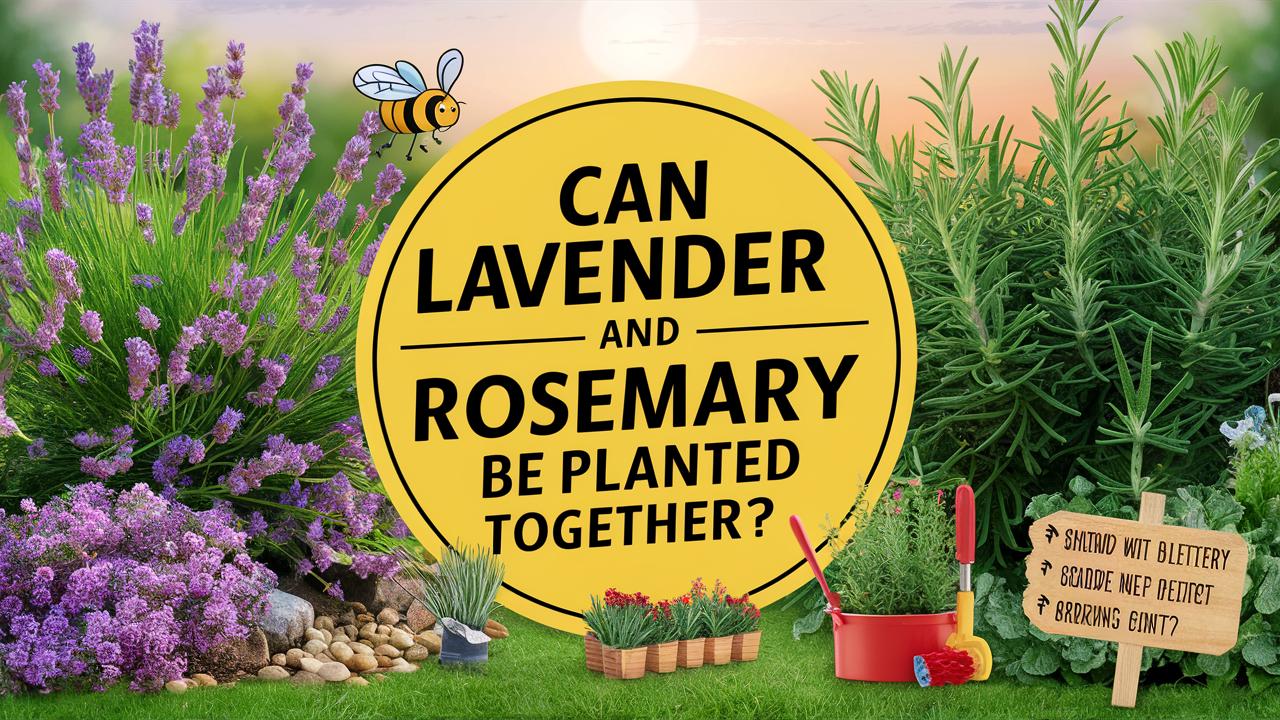If you’re among the many gardening enthusiasts who want to cultivate a beautiful and fragrant herb garden, you might be wondering whether lavender and rosemary can coexist harmoniously. Both of these herbs are not only beloved for their aromatic qualities and culinary uses, but they also add vibrant colors and textures to your garden.
However, before you start planting, it’s essential to understand their growing requirements, benefits of companion planting, and practical tips to ensure they thrive together.
Understanding Lavender and Rosemary
The Charm of Lavender
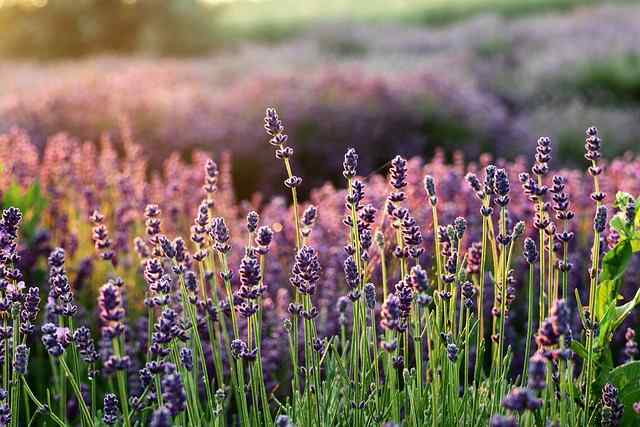
Lavender (Lavandula) is a perennial herb known for its stunning purple flowers, soothing fragrance, and versatile uses. Originally hailing from the Mediterranean region, lavender is renowned for its role in aromatherapy, culinary applications, and even in traditional medicine. Growing lavender in your garden is more than an aesthetic choice; its essential oils derived from its flowers can promote relaxation, improve sleep quality, and relieve stress.
Lavender prefers well-drained soil, full sun exposure, and benefits from dry conditions. Its drought-resistant nature makes it an excellent choice for water-wise gardens and xeriscaping. Some popular varieties include English lavender (Lavandula angustifolia) which is appreciated for its sweet scent, and French lavender (Lavandula stoechas), known for its unique tufted blooms.
The Versatility of Rosemary

Like lavender, rosemary (Rosmarinus officinalis) originates from the Mediterranean and is praised for its culinary and medicinal properties. This woody perennial not only adds a flavorful punch to various dishes, from roasted meats to savory breads, but also possesses antioxidant properties and may aid digestion.
Rosemary thrives in similar conditions to lavender, preferring well-drained soil and plenty of sunlight. Its bushy growth can reach significant heights, making it a great centerpiece in herb gardens or borders. There are several varieties of rosemary, each with its own unique flavor profile and aesthetic appeal.
Compatibility in Gardening
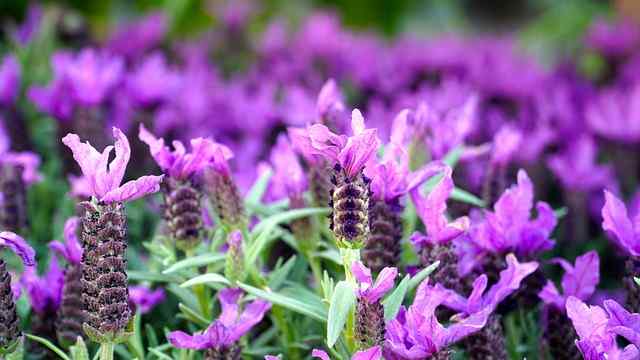
Similar Growing Conditions
When it comes to planting lavender and rosemary together, one of the most encouraging factors is their shared growing requirements. Both herbs prefer:
Well-drained soil: Excess moisture can lead to root rot; therefore, a sandy or rocky mix is ideal for both plants.
Full sun exposure: Ideally, they should receive at least 6-8 hours of direct sunlight each day.
Drought tolerance: Their ability to withstand dry conditions means they don’t compete aggressively for water.
Given these similarities, it’s reasonable to explore whether they can be planted together in the garden.
Companion Planting Benefits
Companion planting—the practice of growing different plants in proximity for mutual benefits—can create a healthier garden environment. Lavender and rosemary can be excellent companions due to several reasons:
Pest Repellence: Both lavender and rosemary have scents that deter pests. Lavender can repel moths, fleas, and mosquitoes, while rosemary is effective against a range of insects, such as cabbage moths. Planting them together may enhance the natural pest-repelling attributes of each herb, providing an organic means of keeping unwanted visitors at bay.
Attracting Beneficial Insects: While both herbs deter pests, they also attract beneficial insects, including pollinators like bees and butterflies, which play a vital role in the ecosystem. Having a diverse array of flowering herbs can help sustain these beneficial populations.
Floral Beauty and Scent: Combining lavender’s vibrant purple flowers with rosemary’s green needles creates an aesthetically pleasing garden landscape. The contrasting colors and fragrances not only enhance the garden’s beauty but also provide sensory joy throughout the growing season.
Creating a Balanced Environment
While lavender and rosemary are compatible, it’s essential to ensure that the planting conditions are conducive to their growth. Keep the following factors in mind:
Space: Ensure adequate spacing between plants to promote airflow and avoid overcrowding. Rosemary can grow quite large, so consider planting it at the back or center of your garden, with lavender positioned on the edges or in front.
Soil Type: Both herbs thrive in slightly alkaline to neutral pH soil. A soil test can help gauge the pH, and adjusting it with lime (to raise pH) or sulfur (to lower pH) may be necessary depending on your existing soil conditions.
Watering: While both plants are drought-tolerant, they will need some water during their establishment period. Once established, they will require minimal water, making them ideal for low-maintenance gardeners.
Practical Tips for Planting Lavender and Rosemary Together
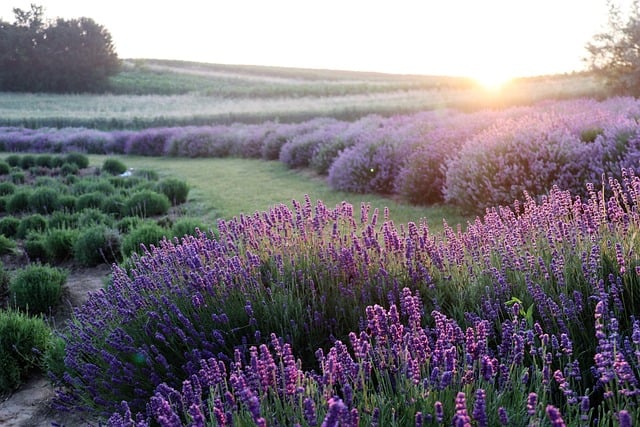
Selecting the Right Varieties
Choosing the appropriate varieties of lavender and rosemary based on your local climate can greatly affect the success rate of your gardening efforts. For example, if you live in a region with colder winters, opting for hardier varieties such as English lavender and ‘Arp’ rosemary can lead to better results. Researching local growing conditions and choosing plants that thrive in your area is essential.
Preparing the Soil
To create an optimal environment for both herbs, follow these practices:
Soil Amendments: Before planting, amend the soil with compost or well-rotted manure to enrich it while ensuring adequate drainage. Avoid using heavy clay mixtures, as they retain too much moisture.
Creating Mounds: Consider planting both herbs in raised beds or mounds to enhance drainage. This will help them tolerate drought conditions better.
Mulching: A thin layer of gravel or stone mulch can help retain moisture while allowing excess water to drain away from the roots.
Planting Techniques
Proper planting techniques can maximize the growth and health of lavender and rosemary:
Spacing: Ensure that you plant each lavender and rosemary unit about 2 to 3 feet apart to prevent overcrowding and competition for nutrients.
Sun Exposure: Choose a sunny location, preferably south-facing, to give both herbs the best chance of receiving full sunlight throughout the day.
Watering: After planting, water them lightly to help settle the soil; thereafter, only water them when necessary. A good way to check is to stick your finger into the soil: if it’s dry an inch down, it’s time to water.
Maintenance and Care
To enjoy a flourishing garden of lavender and rosemary, consider these maintenance tips:
Pruning: Both herbs benefit from regular trimming. Prune lavender after blooming but avoid cutting into the woody parts of the plant, as this can harm the plant. Similarly, you can lightly prune rosemary to maintain its shape and promote bushiness.
Fertilizing: While both lavender and rosemary are not heavy feeders, a light application of a balanced fertilizer in the spring can enhance growth. Avoid over-fertilization, as it can lead to lush foliage at the expense of flowers.
Pest Management: Keep an eye on common pests like aphids and spider mites. If they appear, treat them with insecticidal soap or neem oil, taking care to apply in the evening when pollinators are inactive.
Harvesting: Both herbs can be harvested throughout the growing season. Regular harvesting encourages bushier growth. When cutting lavender, do so right before the flowers bloom for the best aromatic quality.
Potential Challenges and Solutions
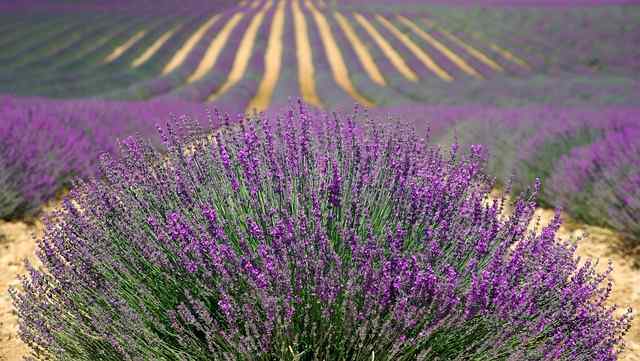
While planting lavender and rosemary together can be rewarding, certain challenges may arise:
Soil Moisture Content
Both plants prefer dry conditions, but they can still suffer from overly moist soil. If you notice yellowing leaves on either plant, it may indicate root rot. To combat this:
Amend Soil: As mentioned, improve drainage by incorporating sand or gravel into the soil.
Raised Beds: Consider transitioning to raised beds or planting on mounds if drainage continues to be an issue in your garden.
Winter Survival
In colder climates, ensuring the survival of both herbs can be a concern. While English lavender is somewhat frost-resistant, rosemary can struggle in harsh winter conditions. To mitigate this:
Mulching: Protective mulching can insulate the roots during colder months.
Container Gardening: If snowfall or frost is a concern, consider growing rosemary in containers that can be relocated indoors or to a sheltered spot during winter.
Sharing Roots and Nutrients
Overcrowding can lead to competition for nutrients, stunting growth. To prevent this:
Proper Spacing: Always allow suitable space for each plant’s mature size.
Crop Rotation: If you notice any signs of nutrient depletion, rotating gardens or intercropping with other herbs can appreciate the overall soil quality.
Conclusion
The prospect of planting lavender and rosemary together is a delightful option for any herb enthusiast. With their similar growing requirements and shared benefits, these two herbs can create a vibrant and aromatic haven in your garden.
Whether you’re looking to craft a fragrant landscape, repel pests organically, or invite beneficial insects into your space, lavender and rosemary can serve as excellent companions. By paying attention to their specific needs and ensuring a healthy gardening environment, you can enjoy a bountiful harvest of both herbs.


